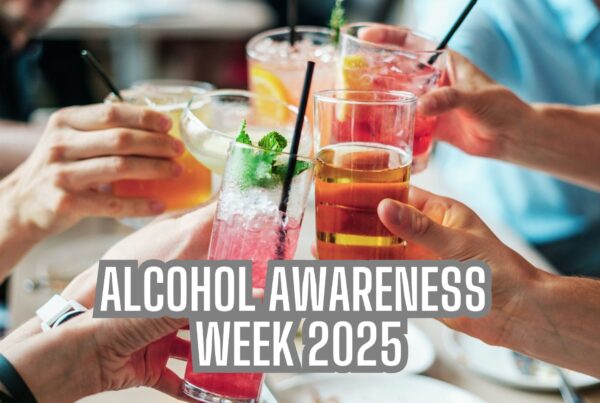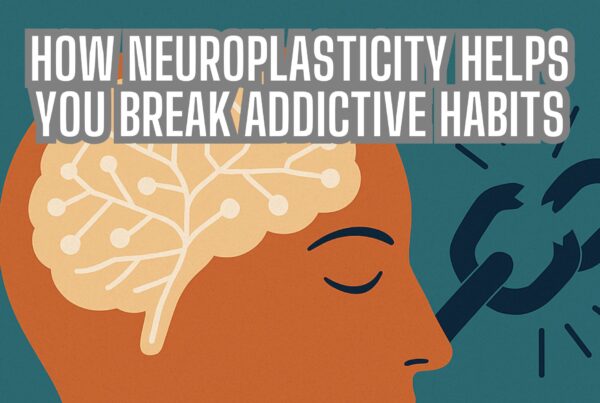Embracing Self-Hypnosis for Addiction Recovery
In a world where addiction challenges many, self-hypnosis emerges as a powerful ally in the recovery journey. This blog explores the transformative role of self-hypnosis in addiction recovery. It offers insights into guiding individuals towards healing and personal growth. Let’s explore how the synergy of the subconscious mind and self-hypnosis aids in recovery.
The Healing Role of the Subconscious Mind
We often regard the conscious mind as our daily navigator, guiding our thoughts, decisions, and actions. In contrast, the subconscious mind remains a vast, unexplored territory, rich with potential and hidden strengths. This part of our mind, often overlooked, holds immense power in shaping our beliefs, emotions, and habits. In the realm of addiction recovery, the subconscious mind plays a pivotal role.
It is in this untamed area of the mind that self-hypnosis emerges as a powerful tool. Unlike traditional therapies that engage the conscious mind, self-hypnosis delves deeper. It taps into the subconscious, allowing individuals to access and influence their deeper thoughts and feelings. This process can be transformative, especially for those battling addiction.
Self-hypnosis offers a unique pathway to healing, one that is less about control and more about discovery and empowerment. By harnessing the power of the subconscious mind, individuals can uncover and address the underlying causes of their addiction. They can reshape their thought patterns, replacing negative beliefs and destructive habits with positive affirmations and healthier behaviors.
The effectiveness of self-hypnosis in accessing and transforming the subconscious has been supported by various studies, including those by Oakley & Halligan (2013). These studies highlight how self-hypnosis can facilitate profound and lasting changes, making it a vital component in the journey towards addiction recovery.
Self-Hypnosis: A Gateway to Personal Transformation in Addiction Recovery
Self-hypnosis, likened to diving into a serene lake of calmness, has been shown by research to induce a state of deep relaxation and heightened suggestibility. In this state, positive affirmations and behavioural suggestions can seep into the subconscious mind, akin to rainwater replenishing a parched soil (Lynn, Rhue, & Kirsch, 2010).
As a self-administered form of therapy, self-hypnosis is an invaluable tool that empowers individuals. It allows them to take the reins of their recovery journey, fostering a sense of ownership and independence that can be extremely beneficial. This process of self-guided mental healing creates a personalized, intimate healing experience which has been observed to be remarkably effective in dealing with addiction (Kirsch, Montgomery, & Sapirstein, 1995).
The Symphony of Self-Hypnosis and Addiction Recovery
Many might question, “How does self-hypnosis aid addiction recovery?” In response, envision addiction as a broken record, constantly replaying harmful habits and destructive behaviours in one’s life. Self-hypnosis acts as the needle, delicately lifting and resetting the grooves of the record. It assists by replacing these harmful, ingrained patterns with healthier behaviours and coping mechanisms (Bányai, Zseni, & Túry, 1993).
Clinical studies provide supporting evidence that self-hypnosis, when incorporated into a comprehensive treatment plan, has been effective in reducing cravings, managing withdrawal symptoms, and reinforcing sobriety (Pekala, Maurer, Kumar, Elliott, Masten, Moon, & Salinger, 2004). In other words, self-hypnosis is like a lighthouse guiding individuals on their path to recovery, illuminating the way through the fog of addiction.
Laying the Groundwork for Successful Self-Hypnosis in Addiction Recovery
Preparation for self-hypnosis can be likened to preparing a canvas for a masterpiece. It involves creating a calm, distraction-free environment, and an open, receptive state of mind (Milling, 2019). Experts suggest beginning with slow, deep breaths, almost as if inhaling tranquility and exhaling tension.
Visual imagery plays a crucial role in the effectiveness of self-hypnosis. By painting a vivid mental picture of a future free from the chains of addiction, the subconscious mind can begin to align with this new narrative. This re-scripting of the subconscious mind can significantly alter the trajectory of addiction recovery, and it has been scientifically substantiated that such mental rehearsals can effectively facilitate behavioural change (Holroyd, 2003).
Walking the Path of Self-Hypnosis for Addiction Recovery
Once the groundwork is laid, individuals can begin their journey of self-hypnosis. They can guide themselves into a state of deep relaxation and then introduce positive affirmations and suggestions related to their recovery goals (Bányai et al., 1993).
Research shows that consistency in the practice of self-hypnosis yields the best results. As with learning a new language or mastering a musical instrument, practice is key. Regular practice of self-hypnosis helps to strengthen the neural pathways associated with new behaviours, effectively creating a new track for the record to play (Spiegel, 1991).
Step-by-Step Guide to Practicing Self-Hypnosis for Addiction Recovery
Step 1: Find a Quiet, Comfortable Space
Begin by finding a quiet and comfortable place where you won’t be disturbed. This space should feel safe and relaxing. Dim the lights or use soft lighting to create a calming atmosphere.
Step 2: Set a Clear Intention
Before starting, set a clear intention for your self-hypnosis session. This could be a specific aspect of your addiction recovery you want to work on, such as reducing cravings or enhancing your motivation to stay sober.
Step 3: Relax Your Body and Mind
Sit or lie down in a comfortable position. Close your eyes and take deep, slow breaths. Focus on relaxing every part of your body, starting from your toes and moving up to your head. With each exhale, release any tension you feel.
Step 4: Use Guided Imagery
Engage your imagination to enter a deeper state of relaxation. Visualize a place where you feel completely at ease. This could be a real or imaginary place. Immerse yourself in this environment, paying attention to the details – the sights, sounds, and sensations.
Step 5: Introduce Positive Affirmations
Once deeply relaxed, start introducing positive affirmations related to your recovery. These should be in the present tense and positively framed, such as “I am strong and capable of overcoming my addiction” or “Each day, I choose a healthy and sober life.”
Step 6: Visualize Your Recovery
Picture yourself successfully managing situations that would have previously triggered your addiction. Visualize yourself responding with new, healthy behaviors. Feel the sense of accomplishment and well-being that comes with these choices.
Step 7: Gradually Return to Full Awareness
After spending some time in this state, slowly bring yourself back to full awareness. Count up from one to five, telling yourself that you are becoming more alert with each number. When you reach five, open your eyes, feeling refreshed and empowered.
Step 8: Reflect and Journal
After the session, spend a few minutes reflecting on your experience. It can be helpful to keep a journal to record your thoughts, feelings, and any insights that arose during your self-hypnosis.
Step 9: Practice Regularly
Consistency is key in self-hypnosis. Try to practice regularly, ideally daily, to reinforce the positive changes and strengthen your commitment to recovery.
Professional Guidance: A Beacon in Unfamiliar Waters
While self-hypnosis is a powerful tool, professional guidance is crucial, especially for individuals dealing with addiction. Clinicians and hypnotherapists can provide the necessary support and expert advice to safely navigate this transformative journey. They are the experienced sailors helping individuals steer their boats through the often turbulent waters of addiction recovery (Alladin, 2018).
Some people might like to explore a process for self hypnosis while others may prefer to use pre-recorded content to help guide them through the experience. There are several options, and the choice is yours.
Self-Hypnosis for Addiction Recovery
Although self-hypnosis offers a powerful tool for addiction recovery, it should be used as part of a comprehensive treatment plan. It is important to remember that every individual’s journey is unique, and what works for one may not work for another. But with the right guidance and commitment, self-hypnosis can indeed be a catalyst for change and a beacon of hope in the journey to recovery.
Release Hypnosis Melbourne Hypnotherapy
Since 2015, Lawrence Akers has been working under the name Release Hypnosis offering Hypnotherapy and ACT based work to the people of Melbourne or an online service. If self-hypnosis for addiction recovery is proving to be a challenge for you, then seeking further assistance might be useful. Based on St Kilda Rd, Release Hypnosis is an easy and convenient location to get to and accessible by the ANZAC station train and tram stop. Release Hypnosis can help with a wide range of presenting issues, and I offer a free 30 minute no obligation discovery call for those who are unsure if hypnotherapy is the right way forward for them.
Book Your FREE 30 Minute Consultation With Release Hypnosis NOW!
You may also like to read:
Discovering Purpose and Values: A Path to Mental Well-being
Can’t Visualise in Hypnosis? Here’s What You Can Do Instead.
Dealing with Financial Stress and Crisis: Finding Peace Amid Turbulence
What Is The Success Rate of Hypnosis?








